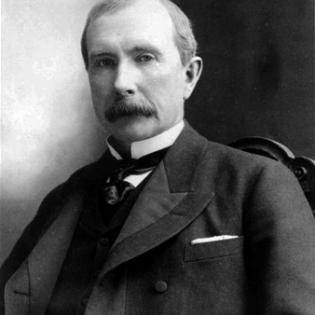The Great Debate: Three Philanthropists in American History
To learn about the different philosophies of three renowned philanthropists.
Image source: John D. Rockefeller in 1885. From Wikimedia Commons. Original source: Rockefeller Archive Center.
Students will:
- Learn about three famous philanthropists (Jane Addams, Andrew Carnegie, and John D. Rockefeller, Sr.)
- Prepare and participate in a “debate” as a group, focusing on why their assigned philanthropist is the greatest and most influential philanthropist in the world
Biographical articles and pictures of Jane Addams, Andrew Carnegie, and John D. Rockefeller, Sr.
Prize(s) for the winning debate team
- If you are able, order Robert T. Grimm’s Notable American Philanthropists. This book contains biographies of more than 100 great Americans that are rich with their history but, unlike most biographies, focus specifically on the details of their contributions to society.
- Read the biographies of Addams, Carnegie, and Rockefeller and decide which key points you feel are important for students to understand about each philanthropist and to share with the other teams through the debate. See “Notes for the Great Debate” handout as an example.
- Create questions that could be used for the debate to augment questions the students develop.
- Print a picture of each philanthropist to put in front of each group when they debate.
Hands-on philanthropy, hands-off philanthropy, wholesale philanthropy, retail philanthropy, paternalistic philanthropy, public speaking, debate, teamwork
Grimm, Robert T. (2002). Notable American Philanthropists: Biographies of Giving and Serving. ABC-CLIO.
Other sources for biographical readings:
Jane Addams
Daniels, Patricia (2016, April 28). “Jane Addams: Social reformer and founder of Hull House.” About Education. Available at https://www.thoughtco.com/jane-addams-1779818
The Nobel Foundation (1931). “Jane Addams – Biographical.” The Nobel Peace Prize 1931. Available at https://www.nobelprize.org/prizes/peace/1931/addams/biographical/
John D. Rockefeller, Sr.
Gordon, John Steele. “John Rockefeller, Sr.” Philanthropy Roundtable. Available at https://www.philanthropyroundtable.org/almanac/people/hall-of-fame/detail/john-rockefeller-sr
The Rockefeller Archive Center. (1997). “The Rockefellers: John D. Rockefeller, 1839-1937.” Available at https://rockarch.org/bio/jdrsr.php
Andrew Carnegie
Lenkowsky, Leslie. “Andrew Carnegie.” The Philanthropy Hall of Fame. Philanthropy Roundtable. Available at https://www.philanthropyroundtable.org/almanac/people/hall-of-fame/detail/andrew-carnegie
Rockefeller Philanthropy Advisors. “Andrew Carnegie.” Philanthropy Roadmap. Available at https://www.rockpa.org/philanthropy-roadmap/andrew-carnegie/
Instructions
Before the day of the debate, assign readings about the three philanthropists to all students; ask them to take notes about each and be able to explain the different philanthropic philosophies of each.
After the students read the materials, put them into three groups (the Addams group, Carnegie group, and Rockefeller group). Print a picture of each philanthropist to put in front of each group when they debate.
As a group, ask the students to create questions to ask the other groups and to come up with strong arguments as to why their philanthropist is the best.
Begin the debate. As the instructor, you are the moderator of the three philanthropists and will guide the debate. Whichever group presents the strongest argument and exhibits the best knowledge of the different philosophies gets a prize.
